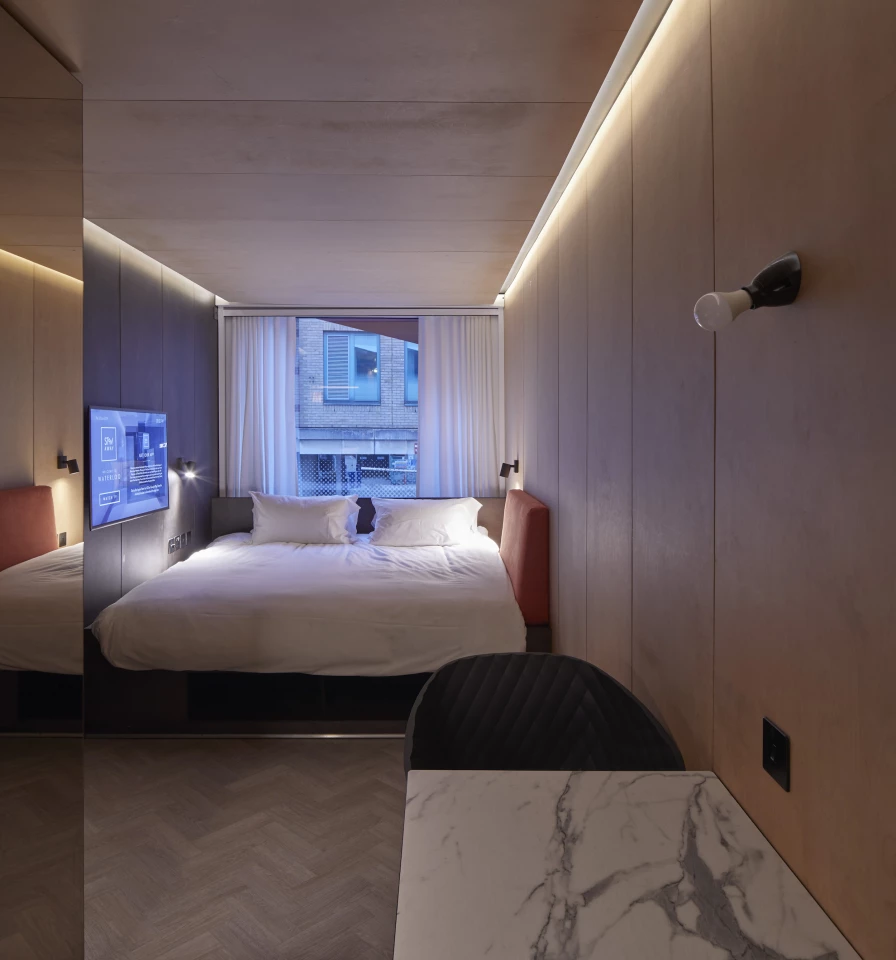Shipping containers have been used for a wide range of projects, from tiny houses to apartment buildings, and, despite their limitations, continue to spark the imaginations of architects. The latest example of this comes from UK design studio Doone Silver Kerr, which used the metal boxes to create a hotel in London.
Located in Waterloo, the Stow-Away Hotel consists of recycled 30-ft (9.1-m)-long shipping containers stacked five containers high, to offer a total of 20 "aparthotel" rooms which can be used for short or longer stays. A wine bar and reception area are installed on the ground floor.
The containers themselves have been painted a uniform white and modified with glazing and doors. We've no word on insulation, which tends to be the Achilles heel of these container-based projects, though the firm did add shading fins to the windows to mitigate solar heat gain and enliven the exterior appearance.
Additionally, rubber padding was used to reduce vibrations and sound carrying throughout the rooms and stairs and elevators were also added to the rear of the building.

The interiors of the hotel rooms are finished in stone and stained plywood, and have a muted color palette. They feature a kitchenette, which boasts a dishwasher, as well as a sink, microwave, and portable hotplate, in addition to cabinetry with cutlery and the like.
The bathroom includes a shower, sink, and toilet, and the bed has wall cushions so it can be used to watch the wall-mounted TV.
"Stow-Away demonstrates DSK’s enthusiasm for new construction techniques that can unlock the potential of complex, constrained sites, responding to the demands for increasingly flexible, innovative, technology-driven urban structures," says Ross Kerr, Director, Doone Silver Kerr.
Source: Doone Silver Kerr













